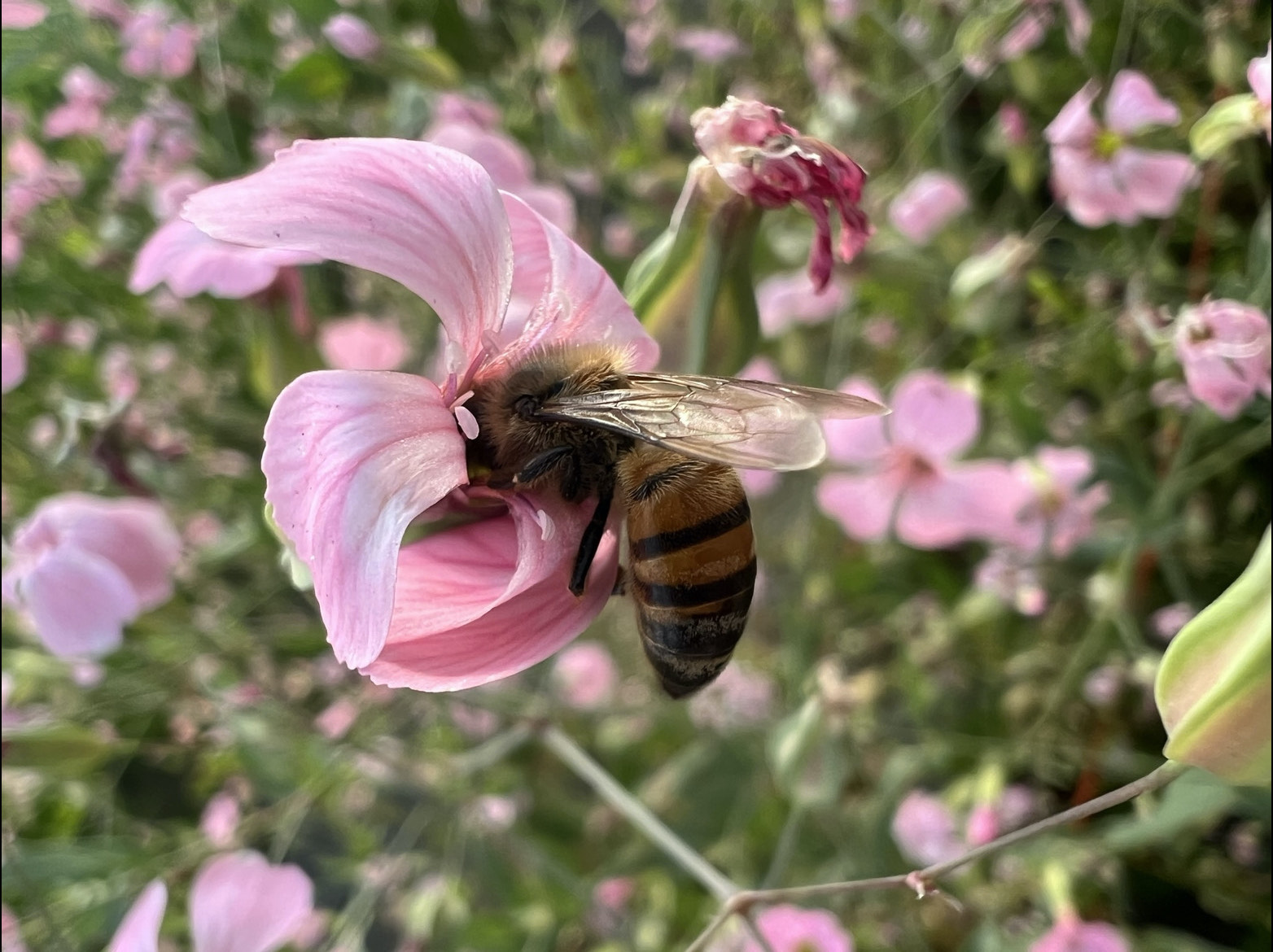
Flowering plants to attract pollinators: Pollination syndromes
Join Amaranta Arellano and Alejandra Roldán in recognizing the types of pollinators and the flowers that attract them, in Flowering Plants to Attract Pollinators: Pollination Syndromes.
Most flowering plants require visitors capable of transporting their genetic material. For this, they have designed strategies that serve as signals and/or rewards for pollinators, which may be related to nectar production (quantity and schedule), aroma, the color and shape of the corolla, timing and season of flower opening, among others (Goluvob and Mandujano, 2009). The pollinator is the animal that is responsible for transporting pollen from the male organ of one flower to the female organ of another, once it has fed or interacted with it.
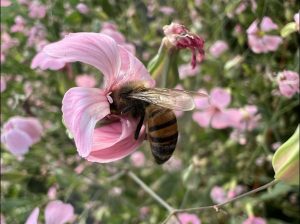
Be(e) flower!
Fotografía / Photography: Adriana Mosele
Relationship and coevolution of pollinators and flowers: Pollination syndromes
Chiropterophily (bats and flowers):
The flowers that attract nectarivorous bats open their petals at night, coinciding with the same time these mammals go out to search for their food. These types of flowers emit strong sulfur, sweet, and moist odors, present white, green, yellow, and purple colorations, as well as deep tubular corollas that store nectar at their base, which is accessible to the thin and elongated tongue of these mammals. The bat’s fur on the face, body, and wings allows the pollen to stick to them.
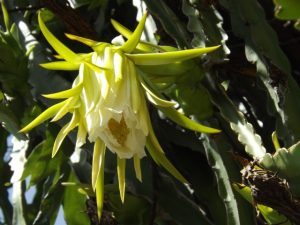
Semi-open flower of the genus Hylocereus
Fotografía / Photography: Amaranta Arellano Rivas
Ornithophily (birds and flowers):
Thanks to the beak they possess, birds choose to pollinate flowers with a prolonged tube or funnel shape, as the contact with the pollen and drinking the nectar found in the depths becomes an easy task. On the other hand, pollen is also transported on the wings of birds, as they flutter while drinking nectar from the flower. Another important feature of birds is that some perceive non-spectral colors, essentially choosing those flowers with violet, red, pink, orange, and yellow colors.
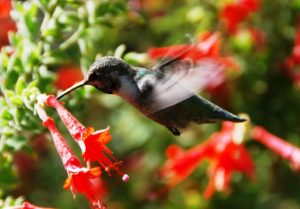
Hummingbird drinking nectar and moving its wings
Fotografía / Photography: Jeffrey Eisen vía Pexels
Melittophily (bees, wasps, ants, and flowers):
For bees, pollen is visible under UV colors (colors on which their vision is based), favoring the identification of the same in their favorite flowers of yellow, white, pink/lilac, and blue, with a fresh aroma. They are distinguished by being small, tubular, concave, or plate-shaped to allow landing and access to the nectar in depth. The flowers visited by ants are usually close to each other to facilitate the rapid transport of pollen, and like bees, some have sensory hairs on which the pollen adheres. As for wasps, their attraction is based on the smell of the fermentation process of the nectar.
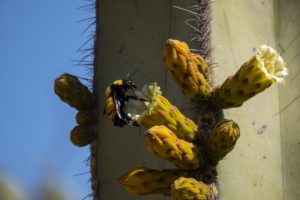
Pollinators in Pachycereus
Fotografía / Photography: Johana Meza Hernández
Cantharophily (beetles and flowers):
The floral species that beetles choose to pollinate can be large or small, but the color is generally white. These emit sweet fruity or floral odors. According to the Ciencia y Luz magazine of the Universidad Veracruzana, the araceae are flowers that open their petals at night, provide heat through their spadix, and emit aromas so that beetles spend several days in them feeding and mating. While this occurs, the pollen adheres to their body, so that when they leave, they transport it to another flower. (Aguilar and Díaz, 2018)
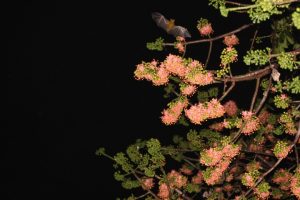
Spectacularity of the Maya tree night
Fotografía / Photography: Henry Fernando Dzul Cauich
Psychophily (butterflies and flowers):
In this syndrome, butterflies are attracted to the colors and scents of flowers, which cause pollen to adhere to their wings, legs, and bodies. In return for the pollinator’s service, the flower rewards it with nectar, which is consumed through the proboscis because, for the most part, these flowers have a very elongated tubular corolla. Moreover, diurnal butterflies have a greater affinity for brightly colored flowers, while nocturnal ones prefer lighter-colored and more aromatic flowers.
Sapromyophily (flies and flowers):
The insects that represent this pollination syndrome are flies, due to their affinity for flowers with unpleasant odors, very similar to organic material in the process of decomposition, carrion, and dung (Proctor et al., 1996). The attraction of flies to sites that resemble breeding and feeding grounds is a pollination syndrome by deception (Grajales–Conesa et al., 2011).
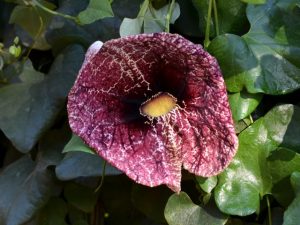
“Pollinators favor the reproduction of flowers and seeds, producing food for animal species, including humans.”
Pollination is important for biodiversity as it favors cross-fertilization, generating genetic variability and giving rise to organisms resistant to pests and/or diseases, producing flowers and seeds that provide food for animal species, including humans.
LITERATURA CONSULTADA / REFERENCES:
Aguilar, Pedro, Díaz, Pedro. “ESTRATEGIAS DE POLINIZACIÓN DE LAS ARÁCEAS” Ciencia y Luz, 5 de junio de 2018. https://www.uv.mx/cienciauv/files/2018/06/18-CYL-ARACEAS-00.pdf Dirección General de Recursos Naturales y Bioseguridad. “¿Qué son los polinizadores?” Consultado el 7 de enero de 2024. https://www.gob.mx/semarnat%7Cpolinizadores/articulos/que[1]son-los-polinizadores?idiom=es Fallon, Candace. “Notes From The Other Orders: Beetles As Pollinators.” Consultado el 7 de enero de 2024. https://www.xerces.org/blog/notes-from-other-orders-beetles-as-pollinators Generación verde. “Síndromes de polinización.” Consultado el 7 de enero de 2024. https://generacionverde.com/blog/cultivos/sindromes-de-polinizacion/ Goluvob J. y M. C. Mandujano. 2009. ¿Por qué los polinizadores visitan a las f lores?. Revista bimestral Casa del Tiempo, 21: 39-41. Grajales–Conesa, J., Meléndez–Ramírez, V. y Leopoldo Cruz–López. 2011. Aromas f lorales y su interacción con los insectos polinizadores. Rev. Mex. Biodiv. vol. 82 no. 4. México. Jiménez-Sierra, Cecili, Matías-Palafox María. “Cuando el amor domina en las relaciones entre individuos de distintas especies: polinizadores y sus f lores preferidas”Revista Digital Universitaria 13, no. 7 (julio 2012): 3-11. https://www.revista.unam.mx/vol.13/num7/art71/art71.pdf López, Margarita, Deloya, Cuauhtémoc. “Escarabajos: Los buenos somos más.” Consultado el 7 de enero de 2024. https://www.inecol.mx/inecol/index.php/es/2013-06-05-10-34-10/17-ciencia[1]hoy/932-escarabajos-los-buenos-somos-mas Proctor, M., P. Yeo y A. Lack. 1996. The natural history of pollination. Harper Collins, London. 479 p. Revista de divulgación científica y tecnológica de la Universidad Autónoma de Nuevo León. “La labor polinizadora de los murciélagos” Consultado el 7 de enero de 2024. https://cienciauanl. uanl.mx/?p=9804 Sánchez, Xiumy, Figueroa, Dulce. “Amos de la noche: la polinización por murciélagos” Elementos 129, (2023): 25-29 https://elementos.buap.mx/directus/storage/uploads/00000008136.pdf United States Department of Agriculture. “Pollinator Syndromes.” Consultado el 7 de enero de 2024. https://www.fs.usda.gov/wildf lowers/pollinators/What_is_Pollination/syndromes.shtml United States Department of Agriculture. “Bee Pollination.” Consultado el 7 de enero de 2024. https://www.fs.usda.gov/wildf lowers/pollinators/animals/bees.shtml











